Veteran Submariners Explain What Might Have Caused Japanese Submarine Collision
Despite all the technology at their disposal, for a submarine crew, the simple act of surfacing can sometimes be fraught with danger.
BY THOMAS NEWDICK AND TYLER ROGOWAY FEBRUARY 9, 2021
For the purpose of this article, our first source prefers to keep their identity anonymous. While we don’t know exactly what happened yet, the scenarios they present provide a fascinating insight into the tricky world of underwater operations from someone whose day-to-day job involved “sub driving.”
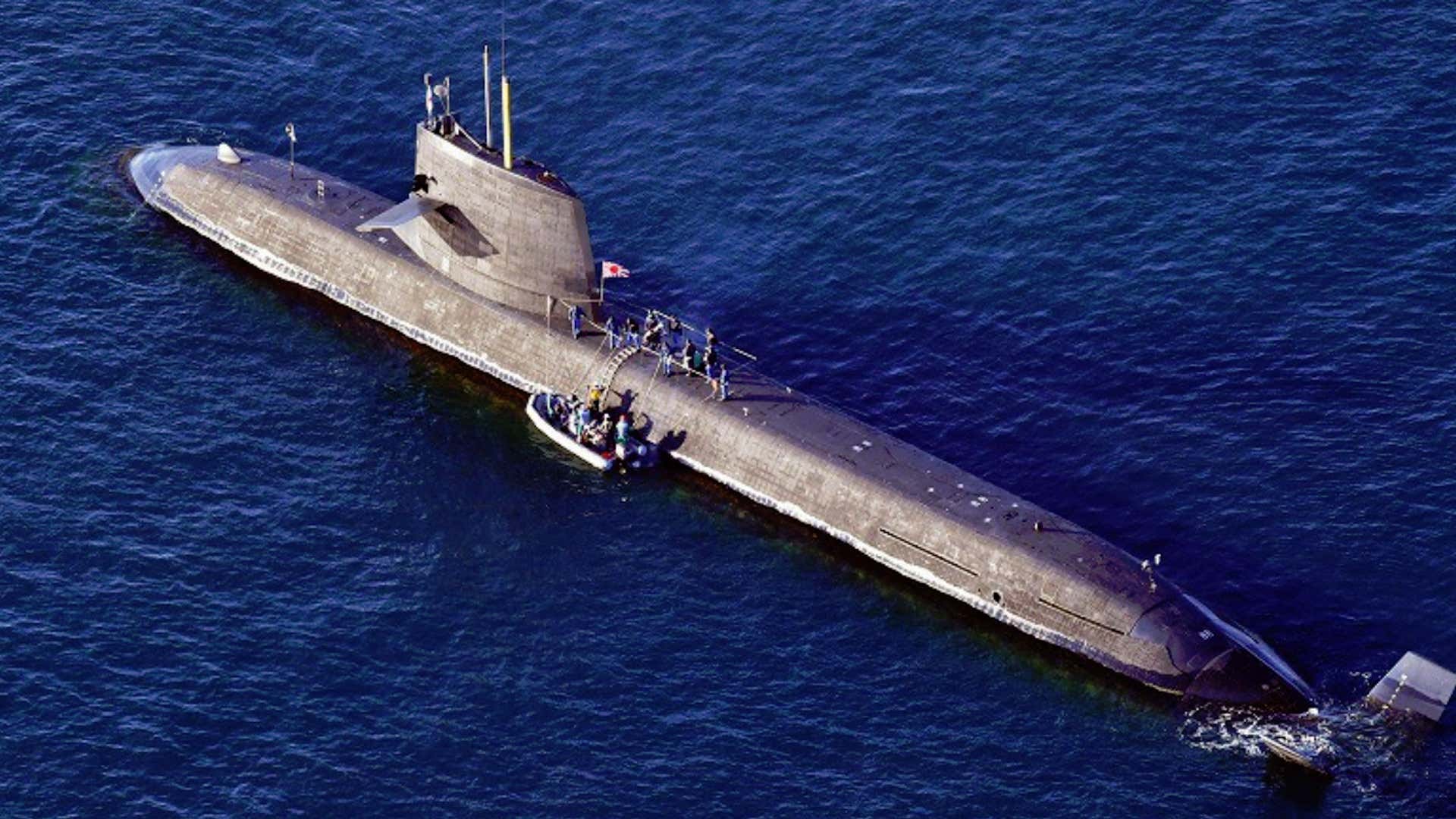
JAPAN COAST GUARD
Soryu after the accident.
First, a recap of what we know happened. Yesterday, at 10:58 AM local time, around 25 miles southeast of Cape Ashizuri, off the island of Shikoku, which lies southwest of Japan’s main island of Honshu, the Japan Maritime Self-Defense Force’s (JMSDF) diesel-electric submarine Soryu collided with the bulk carrier Ocean Artemis. The cargo vessel had departed the Chinese city of Qingdao last Friday and was bound for Okayama Prefecture in western Japan. With 51,000 gross tons and a length of 750 feet, the Ocean Artemis is registered in Hong Kong and was transporting iron ore. For comparison, the submarine has a surfaced displacement of approximately 2,900 tons and a length of just over 275 feet.
Reports state that the collision resulted in injuries to at least three submariners. Initially, the Japanese Ministry of Defense described the damage to the Soryu as limited to masts housing a periscope and a communication antenna. However, photos that have since emerged reveal more considerable damage, including to its dive planes, the starboard one of which is almost broken in two. There also appears to be rather more severe damage to the top of the sail itself, with a number of anechoic tiles missing.
Our submariner source pointed out that automatic identification system (AIS) data — a tracking system that provides logs of vessels’ movements — shows that the Ocean Artemis was heading in a northerly direction and was making between 7.7 and 11.1 knots when it collided with the Soryu. All this information can be gleaned from open sources, including the Marine Traffic website.
Looking at the available evidence, the same source thinks it plausible that the Soryu was submerged, but at a shallow depth. However, the submarine was far enough below the surface to make it impossible to use the periscope. Had the submarine been at periscope depth, it would have been hard to miss a bulk carrier like the Ocean Artemis visually, unless the periscope operator was completely negligent, since it was broad daylight and the weather was fairly good.
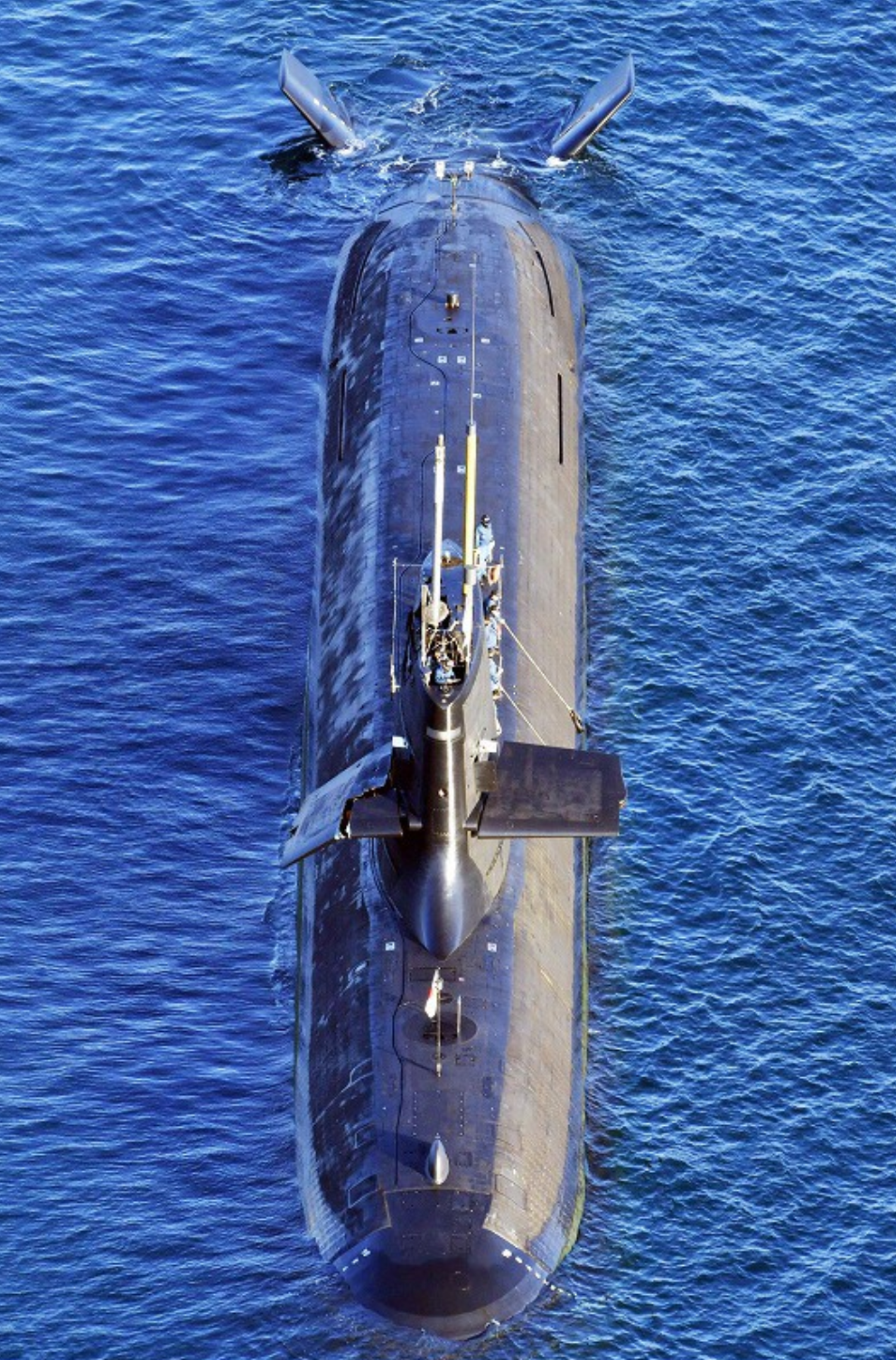
JAPAN COAST GUARD
The submariner notes that it looks like the periscope on Soryu is fully raised, suggesting that it did not directly impact the hull of the container ship. This leads to the assumption that the periscope could have been lowered at the time (or otherwise missed the hull). “Otherwise, it would be bent out of shape or sheered off completely (which may be true, because submarines tend to come with two periscopes for redundancy). Again, it is hard to say for sure, but if they were at periscope depth in broad daylight, they ought to have seen the container ship,” they explained.
In the opinion of our source, Ocean Artemis possibly came up from behind in the baffles — traditionally the sonar “blind spot” behind a submarine made famous during the “Crazy Ivan” set-piece sequence in The Hunt For Red October. Two different factors could have combined to ensure the submarine was not able to see the cargo ship. Firstly, the towed sonar array that could be used to detect the vessel above and behind would have been retracted, which is required in order for the submarine to surface. Second, the submarine has no aft-looking hull-mounted sonar, thus requiring frequent baffle clears — turns to “hear” behind the submarine using forward and side sonar arrays. With the submarine most likely heading in a northerly direction, the forward-looking and flank array sonars would have been biased toward the areas with the highest amount of surface traffic. This means the safety-of-ship sensors prioritize the areas with the most hazards, not out to the open ocean, which would not have helped with the Ocean Artemis probably bearing down on the submarine from the rear.
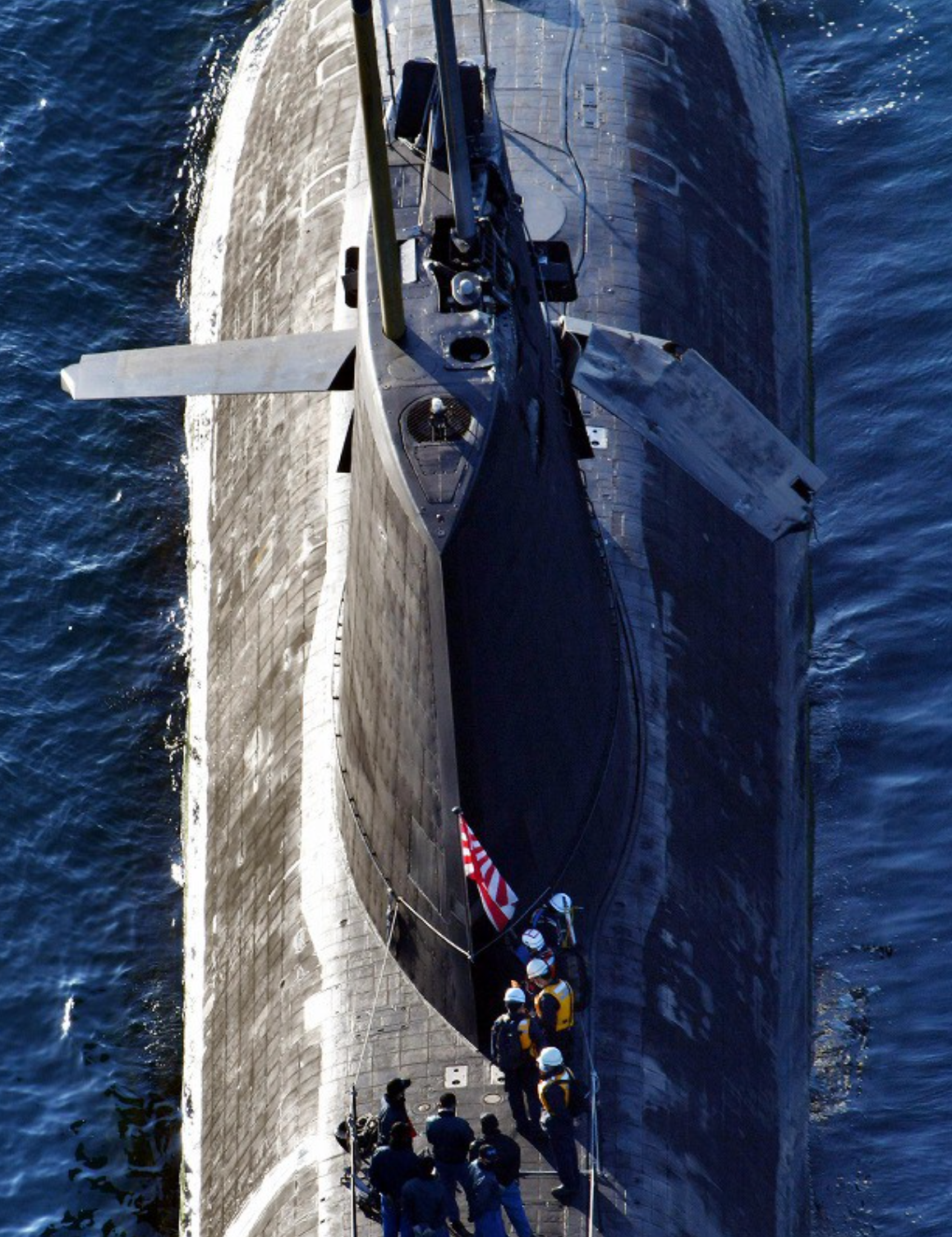
JAPAN COAST GUARD
Coupled with that, having a big cargo ship like the Ocean Artemis approaching from the rear is also the worst case for hydrodynamic forces — Soryu might simply have been sucked up into the ship’s hull due to the Venturi effect. This is not an unknown phenomenon, by any means, and the same thing happened to the Los Angeles class nuclear-powered attack submarine USS Newport News in the south of the Strait of Hormuz in 2007. On that occasion, the submarine was pulled up and into the hull of the Japanese tanker Mogamigawa. The Newport News sustained damage to its bow and the commanding officer was relieved of their command.
The former U.S. Navy submariner also identified certain human factors that could have played a contributing role. The crew of the Soryu may have been fatigued or stressed, or there may have been overconfidence in their abilities, leading to complacency. In the demanding operational environment aboard a submarine, one highly stressful event may have led to a reduction in situational awareness. “These three behavioral characteristics are common in crews post-exercise,” the source notes.
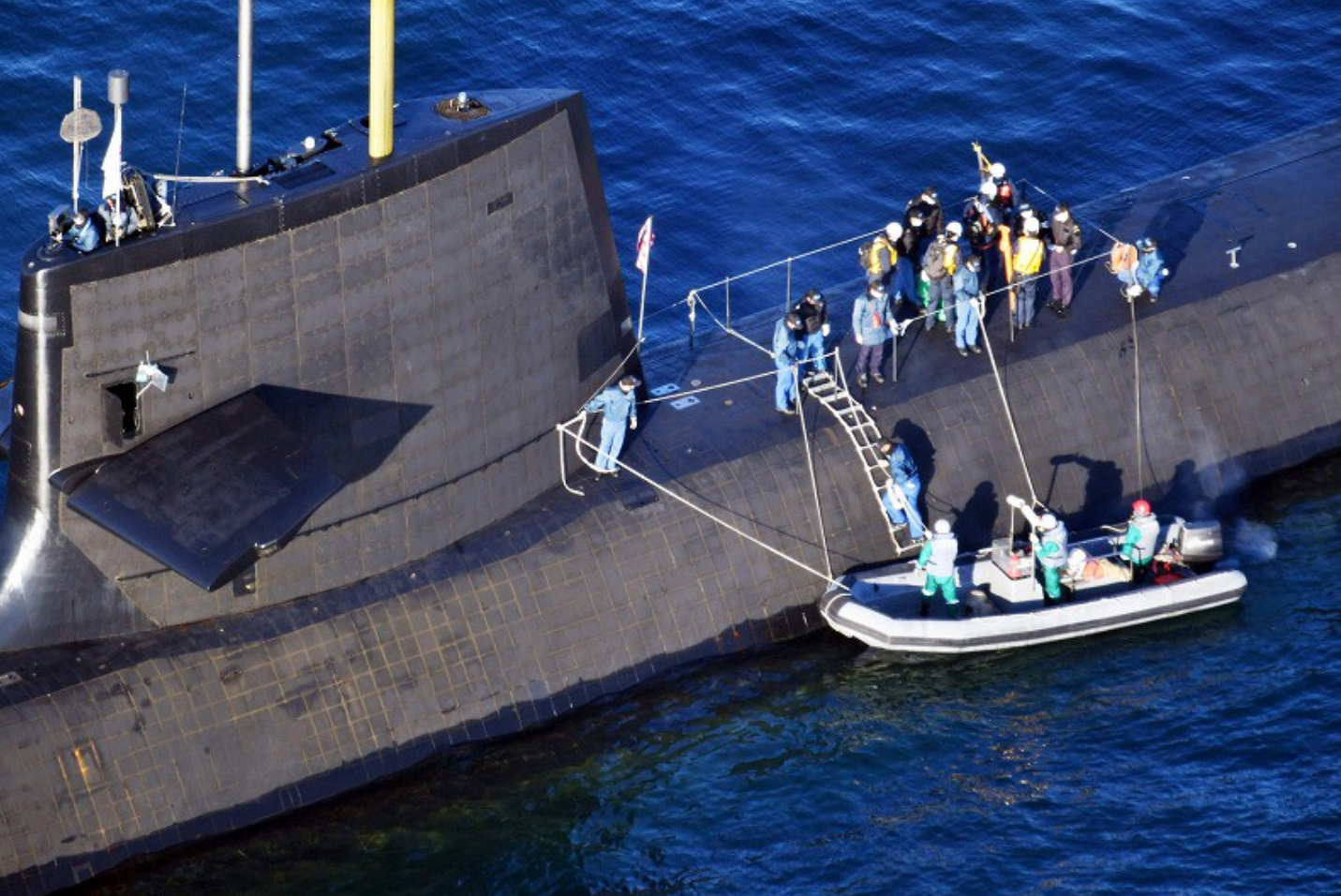
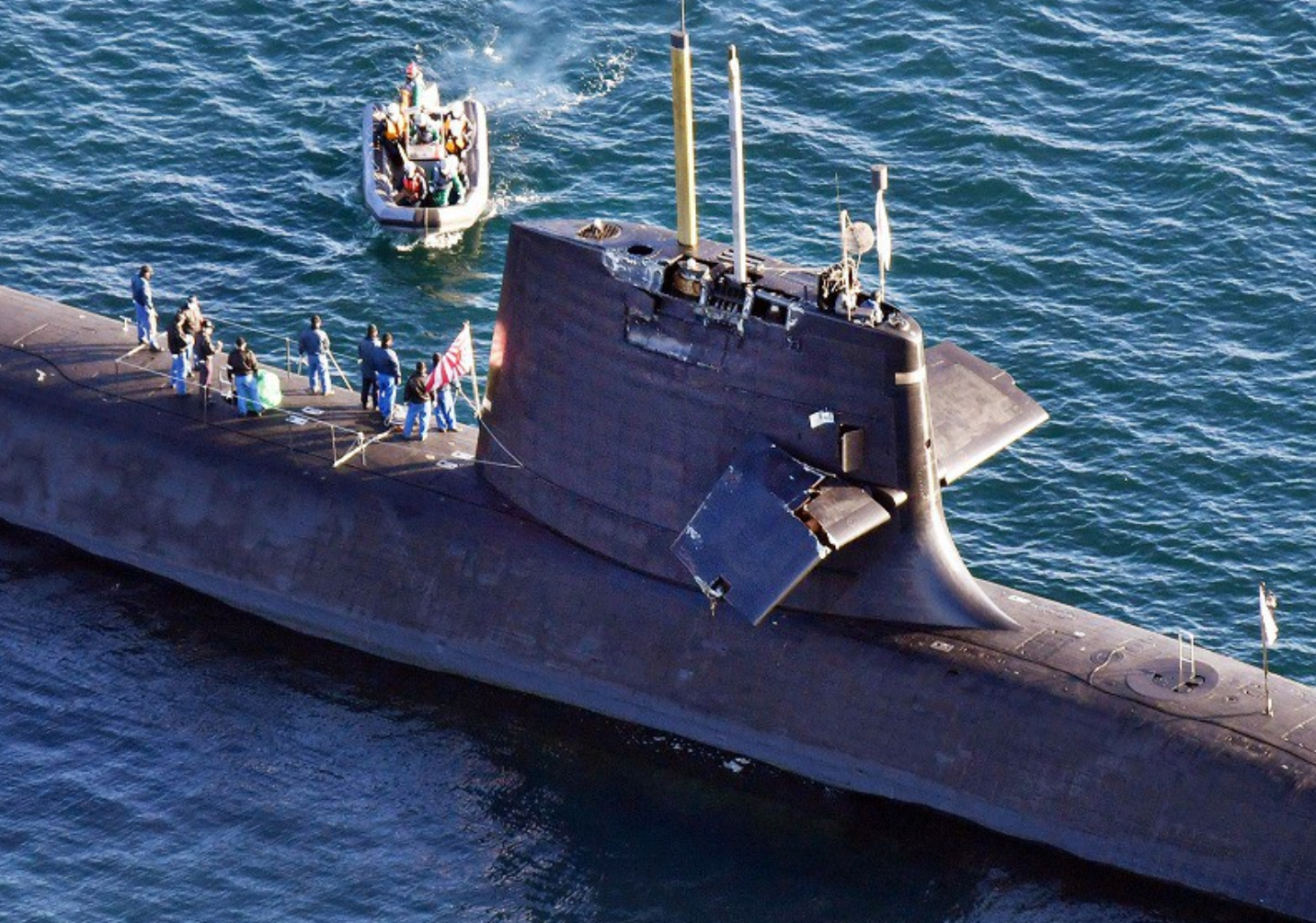
JAPAN COAST GUARD
There is also the possibility that the crew reading the sonar returns aboard the Soryu was unfamiliar with shallow-water acoustic propagation paths. Based on where the mishap occurred, the submarine was likely on the continental shelf, where propagation paths are very different compared to in deep water. As our source explains, “raw data between shallow and deep water can look identical, but mean very different things. i.e., they might have been accustomed to bottom-bounce acoustic signals but were in fact receiving direct path, if they had any signal at all. A direct path contact can be mistaken for a bottom bounce contact at 20 miles away… even to an experienced driver.” In this scenario, it’s suggested that a sonar return from the cargo ship was simply mistaken for a return from the seabed. The ex-U.S. Navy submariner does note, however, that the crews of diesel-electric submarines like the Soryu are typically more adept at shallow water operations than their nuclear-powered counterparts.
Lastly, the incident could have involved a simple collision on the surface of the water, despite it being in broad daylight. After all, “dumber things have happened.”
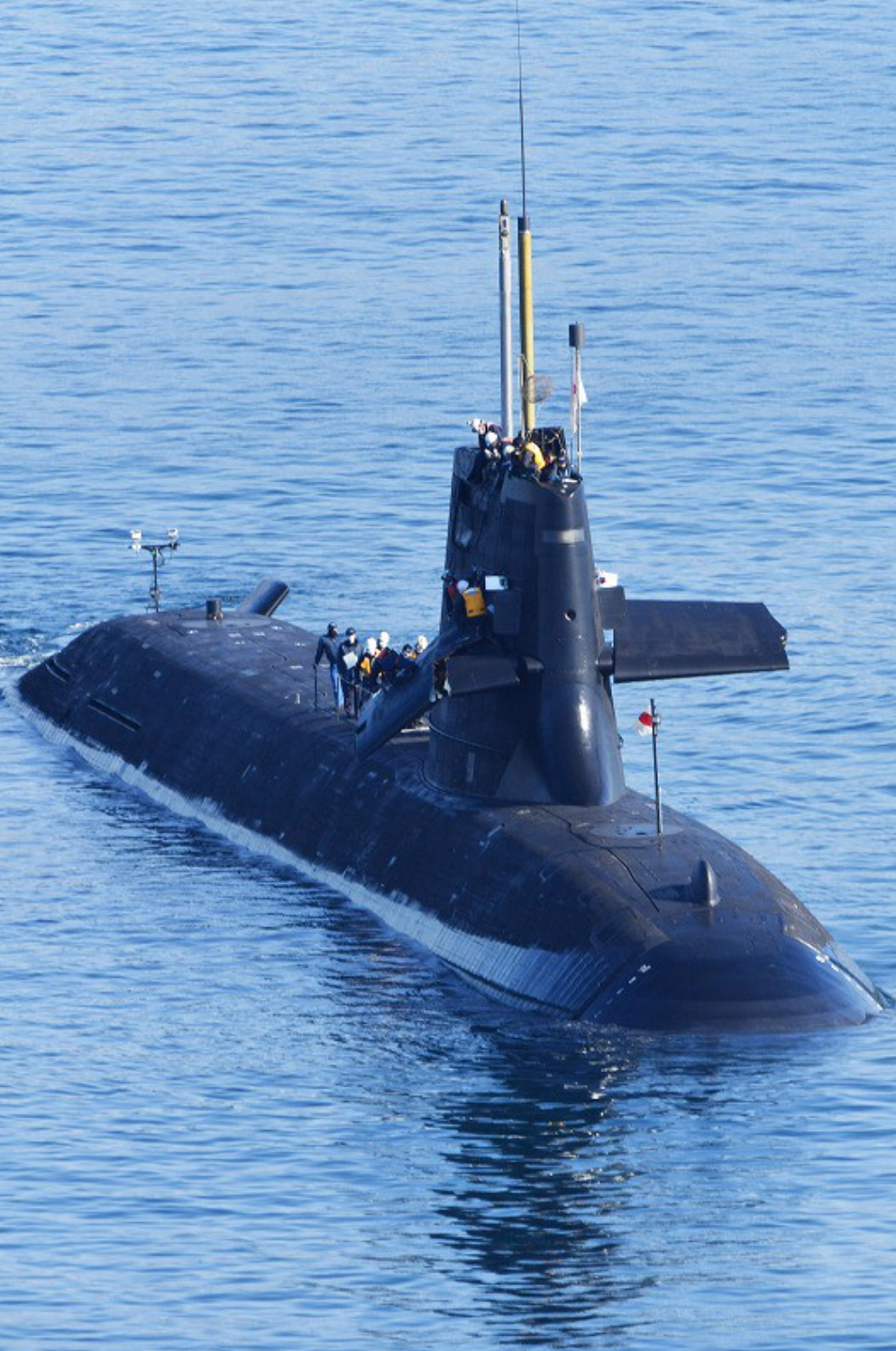
JAPAN COAST GUARD
Aaron Amick had a bit of a different theory on what may have occurred, telling The War Zone:
Japan’s Soryu SSK collision with the Ocean Artemis reminds us how dangerous submarines are to operate at sea. Judging by the photo taken by helicopter after the February 8th collision, it’s clear the strike occurred on the starboard side of the submarine, damaging the sail, dive surfaces, masts, and antennas. The lack of damage topside forward and aft of the sail suggest a broadside impact. If this is the case, the cargo ship was not in the submarine’s baffles and should have been visible on the sonar displays before the crash.
The damage appears to be limited to the top part of the sail and the fairwater plane, indicating the submarine was in a submerged condition at the time of impact. It is clear the Soryu was making preparations for periscope depth and was sucked up into the passing hull of the Ocean Artemis or was at periscope depth and was pushed aside by the mammoth ship.
Amick, who also runs Subbrief, made the following video explaining the rationale behind his thinking:
Two very insightful possible explanations from two experienced submariners.
Whatever turns out to be the cause of the incident, in this case, we can be thankful that no one was more badly hurt. The former U.S. Navy officer we spoke to also provided a note of caution: as behemoth cargo ships continue to proliferate in the world oceans, unfortunately, the likelihood of these sorts of collisions is only going to increase.
Contact the author: thomas@thedrive.com and tyler@thedrive.com
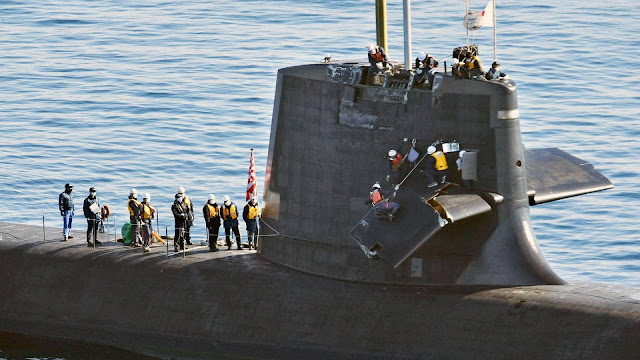
No comments:
Post a Comment